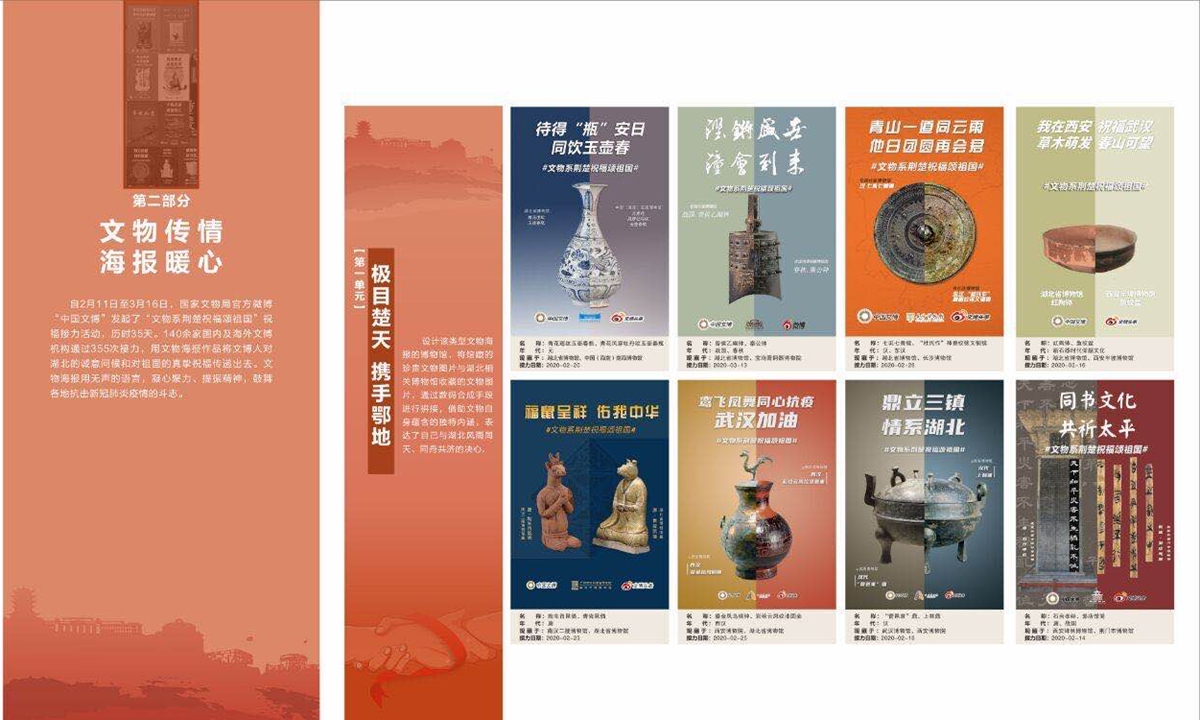China’s fourth cultural and natural heritage day shines with various events
By Chen Xi Source:Global Times Published: 2020/6/13 16:16:14

Promotional material for China’s fourth cultural and natural heritage day Photo: Courtesy of China's National Cultural Heritage Administration
More than 4,600 online and offline cultural events across China will join a celebration for China’s fourth cultural and natural heritage day, with the city of Guilin, in South China’s Guangxi Zhuang Autonomous Region, as the main event venue, according to the National Cultural Heritage Administration (NCHA) on Saturday.
Liu Yuzhu, head of the NCHA, said in regards to the event that China currently has 767,000 immovable cultural relics and 108 million pieces of movable State-owned cultural relics.
He said during the novel coronavirus period, the national museum industry paid close attention to prevention and control measures in museums, and the NCHA has launched more than 2,000 online exhibitions, which had attracted more than 5 billion views.
According to a document that NCHA sent to the Global Times on Saturday, an exhibition about medical staff fighting COVID-19 epidemic debuted at Guilin Museum.
The first medical team from Guangxi Zhuang Autonomous Region to Wuhan, Central China’s Hubei Province donated some of their items to Guilin Museum, including their PPE suits, the application form for a request to aid the patients in the intensive care unit (ICU), a photo of their honor certificate and the commemorative medal as well as some photos and videos from when they were supporting Hubei Province, read the document.
Apart from the events in Guilin, China's 4,296 major cultural heritage sites and 5,354 museums also launched various activities including some intangible cultural heritage workshops for the celebration.
For example, the Sichuan Provincial Department of Culture and Tourism in Southwest China’s Sichuan Province launched an online exhibition under the title “The Beauty of Living Wealth of Sichuan”, featuring Sichuan Province’s intangible cultural heritage.

Promotional material for China’s fourth cultural and natural heritage day Photo: Courtesy of China's National Cultural Heritage Administration
Local officials also announced on Saturday that they plan to build Leshan Giant Buddha academy into a world-renowned research base that integrates scientific research, protection and displays within three to five years.
The Leshan Giant Buddha, the largest and tallest stone Buddha statue in the world, was listed as a UNESCO World Heritage Site in 1996.
Liu added that China’s cultural relics have built a bridge for cultural communication with other countries and regions around the world.
“China has a total of 55 world heritages sites, and would hold nearly 100 cultural relics exhibitions overseas each year. We have jointly carried out 44 archaeological projects with 24 countries,” he said.
According to media reports, China has helped Cambodia and Italy repair damaged relics, and also plans to send experts to participate in the restoration of the fire-ravaged Notre Dame cathedral in Paris.
China's cultural and natural heritage day has been set for a celebration on the second Saturday of June every year since 2017.
Posted in: CULTURE & LEISURE